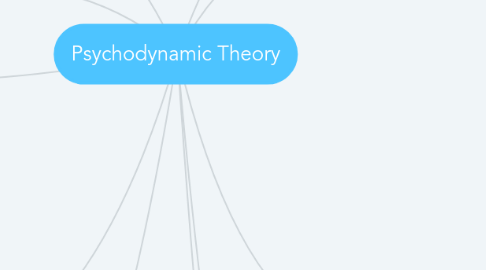
1. Dream Analysis
1.1. Examining the underlying meaning of dreams to uncover unconscious conflicts
2. Transference
2.1. Exploring the client's feelings towards the therapist and how these might reveal earlier relationship issues (often formed in childhood)
3. Countertransference
3.1. An examination of the therapist's feelings towards the client which indicate unresolved issues held by the therapist which have been triggered by the client's transference
4. Key defence mechanisms described by Anna Freud (1936/1966) in her book
4.1. 1. Repression (motivated forgetting) the instant removal from awareness of any threatening impulse, idea or memory
4.2. 2. Denial (motivated negation) - Blocking of external events and information from awareness
4.3. 3. Projection (displacement outwards) - attributing to another person one's own unacceptable desires or thoughts
4.4. 4. Displacement (redirection of impulses) - channeling impulses (typically aggressive ones) on to a different target
4.5. 5. Reaction formation (asserting the opposite) - defending against unacceptable impulses by turning them into the opposite
4.6. 6. Sublimation (finding an acceptable substitute) - transforming an impulse into a more socially acceptable behaviour
4.7. 7. Regression (developmental retreat) - Responding to internal feelings triggered by an external threat by reverting to 'child-like' behaviour from an earlier stage of development
5. Assessment Issues and Procedures
6. Free Association
6.1. The process of describing feelings and thoughts as they spontaneously occur, without filtering, monitoring or evaluation
7. Analysis of Resistance
7.1. The process of identifying resistances in clients, in order for therapists to work through, understand, and therapeutically challenge these
8. Psychodynamic counselling
8.1. Based on Freud's idea that 'true knowledge of people and their problems is possible through an understanding of three particular areas of the human mind
8.1.1. 1. The Conscious - Things that we are aware of, including feelings, or emotions, such as anger, sadness, delight, surprise, and happiness
8.1.1.1. 2. The Subconscious - These are the things that are below our conscious awareness but easily accessible. They may include, for example, events that we have forgotten, but will easily remember when asked an appropriate question
8.1.1.1.1. 3. The Unconscious - This is the area of the mind where memories have been suppressed and is usually very difficult to access. Such memories may include extremely traumatic events that have been blocked off and require a highly skilled practitioner to help recover
8.2. Psychoanalysis - Consists of three main elements
8.2.1. 1. The Id - The part of our personality concerned with satisfying instinctual basic needs of food, comfort and pleasure. It is therefore present from (or possibly before) birth
8.2.1.1. 2. The Ego - Defined as 'The realistic awareness of self'. It is the logical and common-sense side to our personality. Freud believed that the Ego develops as the infant becomes aware that it is a separate being from it's parents
8.2.1.1.1. 3. The Superego - Develops later in a child's life, from about the age of three. The superego curbs and controls the basic instincts of the Id, which may be socially unacceptable. It therefore acts as our conscience
8.3. The main goal of Psychodynamic counselling is counselling is to help people balance the three elements of their personality so that neither the Id nor the Superego is dominant
8.4. Two Psychoanalytic Triangles of insight
8.4.1. A conflict based triangle includes; 1. the client's wish, aim, or drive, 2. the threat or imagined threat that makes the direct gratification of the wish impossible, 3. the defensive compromise
8.4.2. Transference-based triangle of insight - 1. past relationships, 2. transference, 3. current relationships

